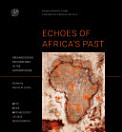Saharan Hunter-Gatherers: Specialization and Diversification in Holocene Southwestern Libya
এই ইবুকখনৰ বিষয়ে
Archaeological and rock art evidence, much of which is unpublished until now, is used to explore the crucial period that encompasses the onset of the “Green Sahara” to the introduction of domestic livestock. It provides a basis for understanding the original cultural and social developments of hunter-gatherers and foragers of the central ranges of the Sahara. The work also bears upon the wider area informing the reconstruction of the environment and cultural dynamics and stands as key reference point for the larger Sahara and North Africa. The book, rich in illustrations, provides a critical synthesis and overview of the developments of central Saharan archaeology within the broader African framework.
The book is invaluable to archaeologists, palaeoenvironmental scientists, and rock art researchers working on the Sahara and North Africa and as comparative work for researchers in African archaeology in general.
লিখকৰ বিষয়ে
Savino di Lernia (PhD) is an Africanist archaeologist based at Sapienza University of Rome, Italy, where he teaches African Archaeology and Ethnoarchaeology. His research interests focus on the study of hunter-gatherer-fishers in northern and eastern Africa and on the analysis of pastoral societies in the Sahara, with particular focus on rock art. He is the director of the “Archaeological Mission in the Sahara” (southern Tunisia and southwestern Libya) and the “Archeological Mission in the Kenyan Rift Valley” (eastern Turkana). He has written and edited nine books and published in peer-reviewed journals such as Nature, Journal of African Archaeology, Science, Journal of Anthropological Archaeology, Journal of Archaeological Science, Antiquity, African Archaeological Review, Journal of World Prehistory. In 2012, he was awarded the “Sangiorgi Prize for the History of Africa” by the Accademia Nazionale dei Lincei, the world’s oldest scientific academy.




